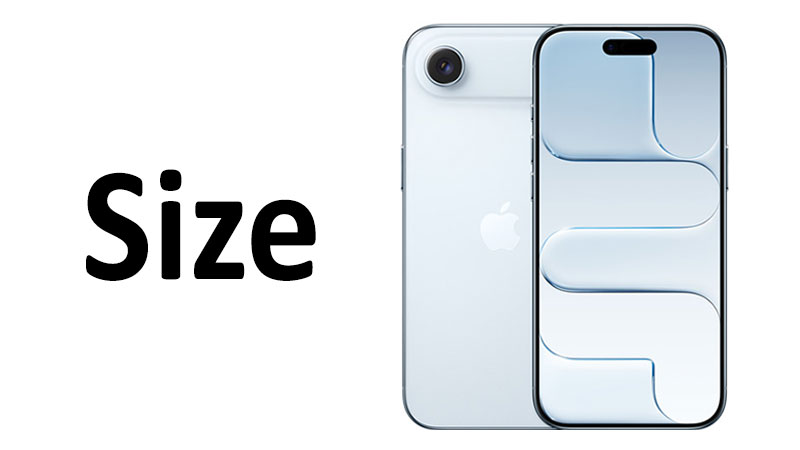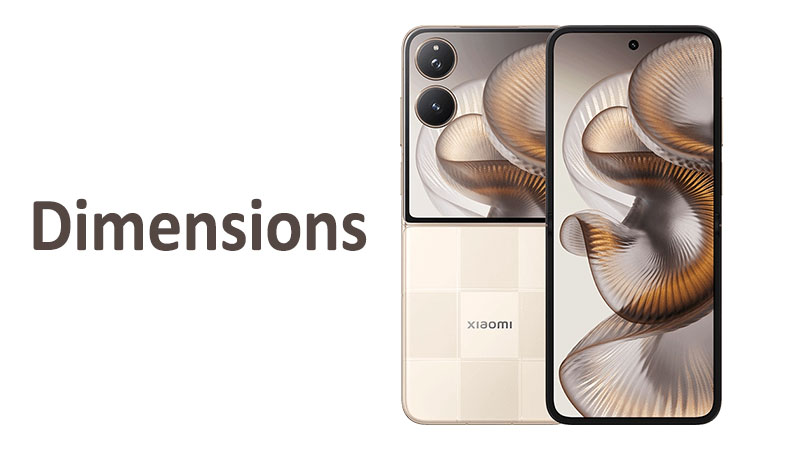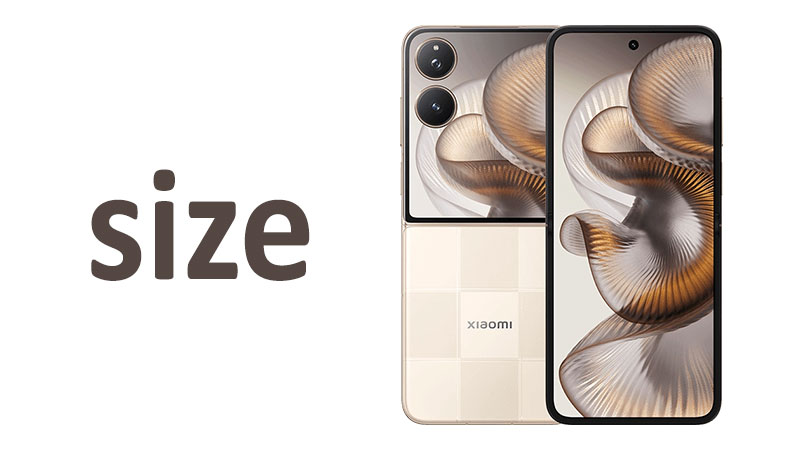The release of a new iPhone is always a major event. This year, Apple introduced a new concept to its lineup: the iPhone Air. The device is not just a new model. It is a bold statement about design. It redefines what a premium smartphone can be. The Apple iPhone Air size is a central part of this story. It is a crucial feature that sets it apart. The phone’s dimensions are a primary focus for many. They influence everything from ergonomics to performance. This article will provide a comprehensive look at the dimensions, comparisons, and implications of the iPhone Air’s design.
A Slimmer, Lighter Profile: The iPhone Air Dimensions
Apple has a history of pushing boundaries with its “Air” products. The MacBook Air, for instance, revolutionized the laptop market. It did so with its impossibly thin profile. The iPhone Air follows this same philosophy. Its design is sleek and minimalist.
The iPhone Air boasts impressive dimensions. It measures 156.2 mm in height. Its width is 74.7 mm. The most remarkable dimension, however, is its thickness. The device is just 5.6 mm thin. This makes it the thinnest iPhone ever produced. The iPhone 6, previously the thinnest, was 6.9 mm thick. This difference is immediately noticeable. The phone feels incredibly light and airy in hand. It lives up to its name.
The display is also a key component of the overall size. The iPhone Air features a 6.5-inch screen. This is a diagonal measurement. The screen-to-body ratio is approximately 89.9%. This means the display takes up almost the entire front surface. This provides an immersive viewing experience. The screen feels large without making the phone unwieldy.

Specialized Comparisons: How the iPhone Air Stacks Up
To understand the iPhone Air’s size, we must compare it. We can look at other models in Apple’s lineup. We can also compare it to key competitors. These comparisons highlight its unique position.
iPhone Air vs. iPhone 17 Pro
The iPhone Air and iPhone 17 Pro are both premium devices. However, their dimensions are quite different. The iPhone 17 Pro is slightly smaller. It has a 6.3-inch display. Its dimensions are 150.0 mm x 71.9 mm. The iPhone 17 Pro is also much thicker. It measures 8.75 mm in depth. It is also significantly heavier. The iPhone 17 Pro weighs 206 grams. In contrast, the iPhone Air weighs just 165 grams. This makes the Air a much lighter and thinner phone. It is a huge difference for daily use.
iPhone Air vs. iPhone 17 Pro Max
The iPhone 17 Pro Max is Apple’s largest flagship. It has a massive 6.9-inch display. Its dimensions are significantly larger in all respects. The Pro Max is also much heavier. It weighs 233 grams. The iPhone Air is a compact alternative to this giant. It offers a large screen without the bulk. This provides a great middle ground for users. They get a big screen without the huge size and weight.
iPhone Air vs. Samsung Galaxy S25 Edge
The competition is also focused on thin design. The Samsung Galaxy S25 Edge is a direct rival. It measures 5.8 mm thick. The iPhone Air is even thinner. This makes it a leader in the ultra-slim category. The iPhone Air’s titanium frame also provides durability. It feels premium and solid. This is despite its delicate appearance.
The Pros and Cons of a Slim Design
The design of the iPhone Air is a double-edged sword. It offers many advantages. But it also comes with some trade-offs. It is important to consider both sides.
Pros: The Benefits of Thinness
- Exceptional Portability and Comfort: The thin and light design is a major pro. The iPhone Air is comfortable to hold. It fits easily into pockets and bags. It is less fatiguing for long periods of use. This is especially true for users with smaller hands.
- Aesthetics and Premium Feel: The slim profile is visually stunning. It gives the phone a sleek, high-end look. The polished titanium frame adds to this premium feel. This makes it a fashion statement as well as a functional device.
- Enhanced Ergonomics: The thinness makes one-handed use easier. It allows for a better grip. It feels less like a brick. This is a welcome change from increasingly bulky phones.
Cons: The Compromises of Thinness
- Potential Battery Life Concerns: A thinner body means less space for components. This includes the battery. The iPhone Air has a smaller battery compared to its larger siblings. This may impact overall battery life. While Apple claims “all-day battery life,” power users might need to carry a charger.
- Simplified Camera System: The ultra-thin design forced a compromise on the camera. The iPhone Air has a single 48MP Fusion camera. It lacks a telephoto or ultrawide lens. It also has a camera “plateau” that juts out. This is a significant trade-off for photography enthusiasts.
- Durability and Heat Management: A thin phone can be more prone to bending. The iPhone Air uses a titanium frame for strength. However, the smaller internal space can also lead to heat issues. The phone lacks the advanced vapor chamber cooling of the Pro models. This could affect performance during intensive tasks.
Important Points for Potential Buyers
Before you buy the iPhone Air, consider these key points. Its unique design caters to a specific audience. It might not be for everyone.
- Prioritize Design and Portability: Do you value a thin, light phone above all else? The iPhone Air is perfect for you. It is a lifestyle device. It is for those who appreciate design and comfort.
- Camera Needs: Are you a casual photographer? The single 48MP camera is likely sufficient. It still produces excellent photos. However, if you need versatility, consider the Pro models. They offer a triple-lens system with more options.
- Performance and Power: The iPhone Air features the powerful A19 Pro chipset. It provides a fast and smooth experience. But remember the potential for thermal throttling. This might happen during extended gaming sessions.
- Ecosystem and Connectivity: The iPhone Air is an eSIM-only device. It does not have a physical SIM card slot. This may be a concern for some international travelers. However, it simplifies the setup process.
Conclusion: Is the iPhone Air Right for You?
The Apple iPhone Air size is its defining feature. It is a stunning example of engineering. Apple has created a device that is both beautiful and functional. The phone is an ergonomic dream. Its dimensions make it a pleasure to hold and use. The 6.5-inch display is large and immersive. It is a fantastic option for media consumption.
However, its slim profile comes with trade-offs. The battery is smaller. The camera system is less versatile. These compromises were necessary to achieve the design. The iPhone Air is not meant to be a Pro device. It is a new category entirely. It targets users who want a sleek, powerful, and portable phone. They are willing to sacrifice some features for superior design.
If you desire the thinnest and lightest iPhone, the Air is for you. It offers a premium feel without the bulk. It represents a fresh direction for Apple’s design language. The iPhone Air is a compelling choice. It stands out in a market of increasingly heavy and thick smartphones.
FAQ
Is the Apple iPhone Air the thinnest iPhone ever made?
Yes, at 5.6 mm thick, the iPhone Air is the thinnest iPhone Apple has ever produced.
What is the screen size of the iPhone Air?
The iPhone Air features a 6.5-inch Super Retina XDR display.
Does the iPhone Air have a physical SIM card slot?
No, the iPhone Air is an eSIM-only device. It does not have a physical SIM card slot.
What is the screen-to-body ratio of the iPhone Air?
The screen-to-body ratio is approximately 89.9%. This indicates minimal bezels.
How does the iPhone Air’s size compare to the iPhone 17 Pro?
The iPhone Air has a slightly larger display and is significantly thinner and lighter than the iPhone 17 Pro.



